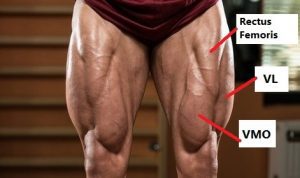This article covers Basic Anatomy, Leg Exercises, some Good Articles and worthwhile Videos.
Page two covers the Key Rules of Leg Training and Sample Workouts.
The leg muscles can be easily divided into those above and below the knee, so let’s start from above the knee.
Anatomy
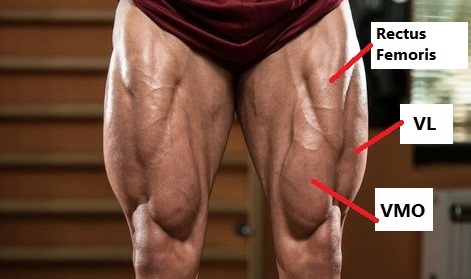
The Quadriceps “Quads” muscles can be found on the front of the leg, and the name comes from the fact there are four main muscles.
- Rectus Femoris
- Vastus Lateralis (VL)
- Vastus Medialis (VMO)
- Vastus Intermedius (VI)
The VI is located behind the Rectus Femoris so is often not labelled in pictures.
The function of the quadriceps is to extend the lower leg at the knee joint.

The Hamstring muscles are located on the rear of the upper leg, and they are the Biceps Femoris, Semitendinosus (ST) and Semimembranosus (SM). Most hamstring injuries are to either the Biceps Femoris or the ST, as injuring the SM is rare.
These muscles are the antagonist (opposite function) to the Quads, and therefore are responsible for flexing the leg at the knee joint.
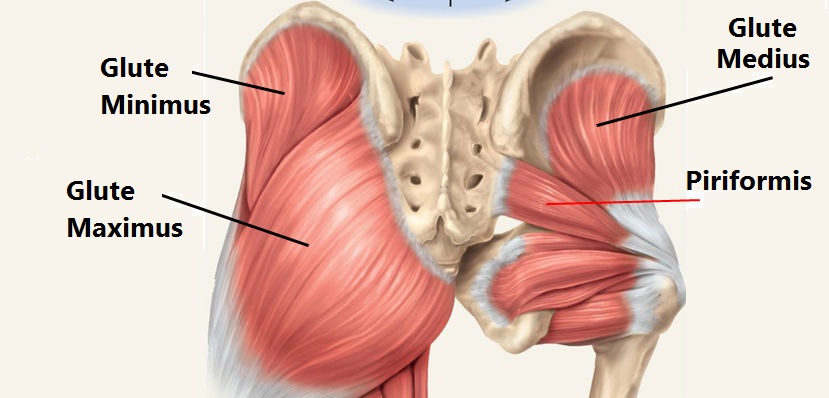
The Gluteal Muscles are your bum muscles and are made of of the larger Gluteus Maximus, as well as the Medius and Minimus. There’s also the Piriformis, which is found behind the glute max. and helps rotate the hip and turn the leg outward.
The glutes in general control functions around the movement of the hips.
There are also two Hip Flexor muscles known as the Iliacus and Psoas Major, often referred to together as the Iliopsoas. As you can guess from the name these are used to flex at the hip joint, for example raising the leg when walking.
A further hip muscle is the Tensor Fasciae Latae (TFL) which assists in balancing the pelvis during walking/running.
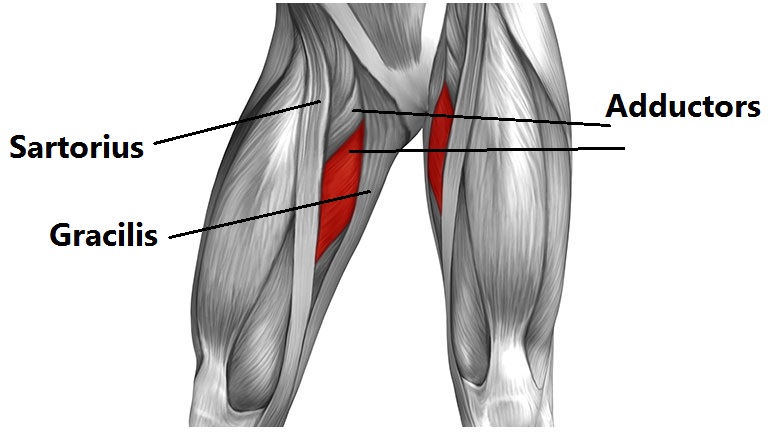
The Gracilis, Sartorius and Adductors make up the other major muscles of the thigh. The Adductors are responsible for bringing the legs in – it would be activated if you put a ball between your knees and squeezed it.
The Abductors aren’t labelled here but they are the antagonist (opposite) muscles which would raise one leg away from the other.
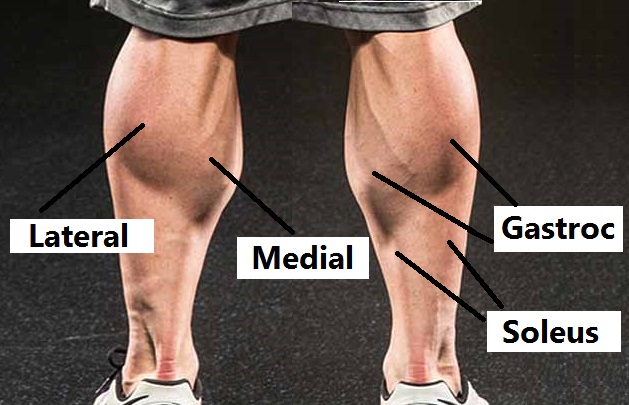
Finishing with the Calf Muscles, the one we’re most familiar with is the Gastrocnemius, which consists of a Lateral and Medial Head. Underneath that and extending in a V shape down the back of the lower leg is the Soleus muscle. Much like the Hamstrings, the Calves also assist in flexing the leg at the knee joint, and also in plantar-flexing the toes, meaning pointing your toes. The antagonist (opposite) muscles of the shin are used to dorsiflex the foot, which is to bring the toes towards the shin.
New Lifters
If you are new to lifting I recommend quickly visiting this page to understand the basic terminology of words like barbell, reps, and supersets.
Articles
The following are links to Articles on Leg Training that could be of interest. The main points of each article are below in Bullet Points.
Article 1 – 10 Best Muscle-Building Leg Exercises @ Bodybuilding.com
- The top ten: Back Squat, Front Squat, Snatch/Power Clean, Deadlift, Hack Squat/Machine Squat, Bulgarian Split Squat, Dumbbell Lunge, Leg Press and RDL.
- Leg Extension and Leg Curl machines don’t make the list as they are single joint movements.
- In most cases free weight movements are preferable to the machine equivalents.
- A similar top 10 list on another site included Step-Up, Pistol Squat, Glute-Ham Raise, though more for functional purposes than pure muscle-building.
Article 2 – The Ultimate Leg Workout: Best Leg Exercises for Big Wheels @ LegionAthletics.com
- For the main leg exercises it’s best to work in the 4-7 rep range.
- If you emphasise 80 to 85% of 1RM then optimal volume is around 60 to 70 reps every 5 to 7 days
- The routine is: Back Squat 3 x 4-6 reps, Front Squat 3 x 4-6 reps, Bulgarian Split Squat 3 x 4-6 reps.
- Optional extras: Hip Thrust 3 x 8-10 reps, Standing Calf Raise 3 x 8-10 reps
- Use 3 minutes rest, and when you can do the maximum reps then increase the weight next time.
Article 3 – 15 Laws of Leg Training @ Bodybuilding.com
- Start with squats, use a full range of motion, include narrow and wide stance squats and make sure you do split squats.
- Boost intensity with drop sets or reduced rest, don’t be afraid to do higher reps and avoid locking out each rep in order to maintain tension in the muscles.
- Target your hamstrings from the hip joint (RDL) and include two types of calf movement (Gastroc/Soleus).
Article 4 – 5 Leg Workouts For Mass @ Bodybuilding.com
- Exercises for Quads – Barbell Full Squat (Rectus Femoris), Hack Squats (VL), Leg Extensions (VMO)
- Exercises for Hamstrings – Barbell Lunges (ST), Lying Leg Curl (SM), Seated Leg Curl (Biceps Femoris)
- Exercises for Calves – Standing Calf Raises (Gastroc), Seated Calf Raise (Soleus)
- Compound exercises 4-6 reps, isolation exercises 8-12 or even 15-20 reps.

